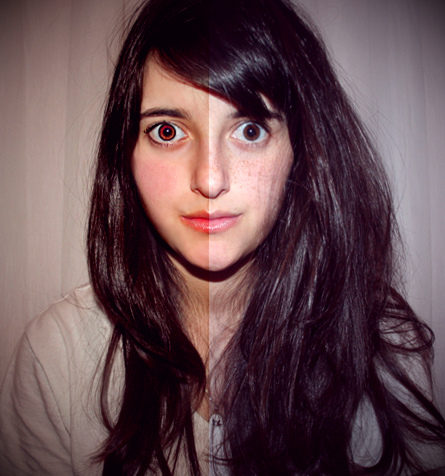faces, fakes and photoshop

My favourite subject at school? Photoshop.
Okay, that may be a little misleading, but in between maths and basic geography, I got pretty good at enhancing digital photographs.
It wasn’t that I took a class in it, per se. It’s just that over two digital graphics subjects and a work experience placement in the pictorial department of a large publication, I became pretty damn good at Photoshop. As a far-from-photogenic sixteen year old, air brushing was an addiction. But now, as the advertising world swings back into yet another evaluation of airbrushed models, I can’t help but think: why on earth was I given so many opportunities to learn how to erase imperfection?
Last month, Britain’s Advertising Standards Authority banned two make up ad campaigns; one featuring Julia Roberts for Lancome, the other Christy Turlington for Maybelline, on the basis that they were too heavily airbrushed. The authority’s verdict was that the ladies you see in these ads look far more flawless than what one could ever achieve with make up. In other words, the brands were using ads that misrepresented their products. By making Christy and Julia all smooth and shiny, parent company L’Oreal had lied about how effective their make up is.
This could be seen as a break through in the world of fashion perfection, but the reality seems closer to deja vu. We’ve known for years now that digital enhancement is used on virtually all types of video-captured promotional material. It’s not an earth shattering revelation that companies make their ambassadors look just this side of doll-like.
But there is a new suggestion here: that a company shouldn’t lie to you through airbrushing. In Britain, the debate circles around airbrushing that goes ‘too far’. Stuff that makes models so unreal-looking that we can visibly notice their perfection instead of merely ignoring their flaws.
The banning is perhaps a token move, but it implies that there is a ‘line’, a point where something is too airbrushed. The question then becomes, ‘Where is that line?’
The banning of the ads is also interesting given that the humble airbrush has gone from strength to strength in domestic forums. Last year, Australian media broke stories in which primary and high schools had received airbrushed copies of class photos. Events photography companies were more than happy to adjust the skin tone, hair dos and uniform tidiness of the kids they’d taken photos of, all in the name of things looking more professional.
Your garden variety photographer has a love affair with photoshopping too. When I was in high school it was a tool you could add to your computer skills kit, like a challenging art project. It still seems to hold that appeal, and while this seems harmless enough, it is difficult to tell what effect it has on what one expects a normal photograph to look like.
You might not care about the use of digital enhancements in advertising, but the boost in ‘Do Your Own’ photoshopping articles, youtube videos and software tutorials suggest that these skills are valued by everyday consumers. And while having this technical know how might bring home just how fake adverts can be, the desire to make one’s family happy snaps perfect is an interesting reflection on the concept of ‘real’ faces.
Britain’s banning of the ads prompted media appraisals of airbrushing in Australia and across the world. Chances are this won’t prompt a detailed review of standards for enhanced ads, but the fact that we are still coming back to the issue is a fresh reminder that so much of our mediated world is choreographed, contrived – and that some of this is above and beyond simply looking streamlined. Instead, it goes towards creating faces and bodies that don’t even look realistically human.
Whether or not you care if an image is photo shopped, the reality is that such images don’t represent reality, and that it’s rare to find an image that hasn’t been played with before the public sees it. What this has done long term to our perceptions of perfection can (and probably will) be argued for years to come.
What the face of Julia Roberts tells us is that digital enhancement is still an issue. Just because the media industry and photo lovers alike embrace it doesn’t eliminate the controversies that digital touch ups bring. And while you can’t ban all ads, perhaps we can identify those that cross from ‘unreal’ into ridiculous perfection.
(Images: 1.)

